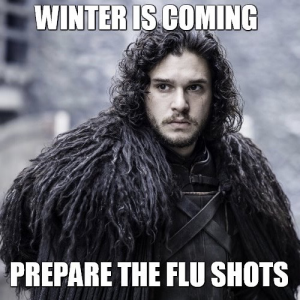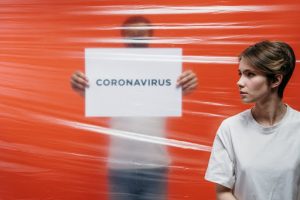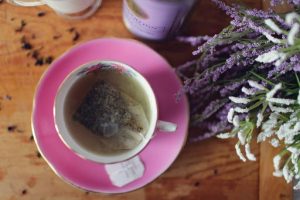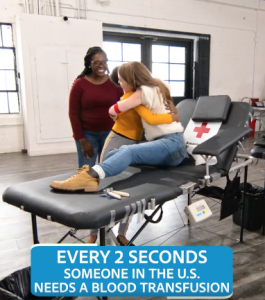
“Winter is Coming”…
OK, so this reference is a bit out of date, but the meme makes up for it. AND, due to COVID-19, getting a flu shot this year is more important than ever.
The CDC estimates that between 36,000 and 61,000 people in the U.S. died from the flu last year. To put this in perspective, this is about twice the number of Americans killed in car accidents annually. And while 9 in 10 people in the US use seat belts, fewer than half get the flu vaccine each year. It is tempting to feel the flu vaccine isn’t necessary – to many, the risk seems low. However, 600,000 people were hospitalized due to the flu during the 2017-2018 season, 50,000 of whom were adults under 50. Half of the children who die of the flu each year have no underlying medical conditions. Many of our patients ask about the low efficacy rates in preventing flu each year with the flu vaccine. We recommend thinking of the flu vaccine as decreasing both the potency and spread of the flu, rather than simply the number of cases prevented. While rates of prevention may be low (this varies year-to-year between 20% to 60% – the CDC estimates the flu vaccine for the 2017-2018 season was 36% effective at preventing the flu), rates of prevention of severe cases are much higher – vaccinated people who end up getting sick have less severe illnesses. And flu virus spread is greatly impacted by small decreases in flu rates.
For adults, including those over age 65, The Village Doctor is again offering Flublok, a quadrivalent recombinant influenza vaccine which has shown greater efficacy over the last several years compared to the traditional quadrivalent vaccine. A study in The New England Journal of Medicine of over 9,000 participants showed Flublok to prevent 30% more cases of flu than the traditional vaccine. It is felt to be comparable in efficacy to the high-dose vaccine for those over age 65. While this is a slightly more expensive vaccine, we believe the benefit to be well worth it. Your trusted medical team here at TVD reminds all of our patients to call today to schedule your flu shot! (Thank you, Dr. Jennifer Abrams, for your work on this piece).
As always, please give us a call if you have any questions or concerns.
(Eric Weiss, MD, September 28, 2020)

NOTE: CV🦠News is a labor of love. If you enjoy reading this, please share widely! Was this forwarded to you by a friend? Please subscribe here.

WHAT ARE “ANTIBODY TREATMENTS” FOR COVID-19?
“Convalescent Plasma” could treat COVID-19
During the 1918 influenza pandemic, doctors found that giving blood from those who had recovered to those currently suffering from the flu could provide useful antibodies to help fight the infection. Since then, convalescent plasma treatment has been used in many infections, including severe flu, MERS, and SARS. Unfortunately, and despite high hopes, SARS-CoV-2 convalescent plasma given to those acutely ill with COVID-19 has proven to have only a marginal benefit. Two potential reasons for its mediocre efficacy might be that the levels of protective antibodies present in survivors fades too quickly or too variably and/or the resulting level of neutralizing antibodies may be too dilute to make a meaningful dent in the viral load of an infected individual, particularly in those less able to mount a robust immune response.
“Enriched” antibody treatment might help bridge the gap until there is a vaccine
Antibody treatment, whether a monoclonal antibody might be used to treat active infection, to prevent infection in high risk people who have been exposed, or even as prophylaxis for front line workers at high risk of infection. Since the beginning of the pandemic, development of antibody treatments for COVID-19 has skyrocketed — currently there are more than a hundred antibody treatments in various stages of development. By June 2020, four had already progressed into human trials, providing hope that a few might be ready by this fall. Researchers, including Harvard T.H. Chan School of Public Health professor of immunology and infectious diseases Phyllis Kanki, caution that not everything works as planned outside of research studies and that it can take time to get the right antibody. Biotech experts, however, have remained more hopeful for a shortened timeline, with many manufacturers willing to take more financial risk in the current pandemic atmosphere.
Could an “antibody cocktail” containing 2 or more enriched monoclonal antibodies be even better?
On Tuesday September 29, 2020, Regeneron Therapeutics held a press release which, along with their earlier work in a peer-reviewed journal published in August, presented additional results focused on patients not so sick as to need hospitalization. In an interview with CNN, Dr. Jeanne Marrazzo, director of the division of infectious diseases at University of Alabama at Birmingham, said the results appear “very promising.” “What I think is fascinating is that it shows that antibodies really matter and the antibody to the spike protein was really helpful, particularly when people made the antibodies themselves,” said Marrazzo. “Whether it’s antibody therapy or a vaccine that targets these proteins, it sounds like we are on the right track. I think that’s really encouraging.” She was also encouraged by the reduction in the amount of virus in people’s throats, which could in theory reduce the risk of infecting others. “If it plays out and you could treat people early and actually reduce the viral load in the nasopharynx, and they might be less infectious, that would be hugely helpful,” said Marrazzo. Jennifer Gommerman, a professor of immunology at the University of Toronto, also used the phrase “really promising:” “It appears that they’ve got positive results and that this antibody cocktail doses reduce the amount of time that the patients are sick, especially the patients that weren’t able to mount their own antibody response,” Gommerman said. “They’re obviously going to have to do much more human experiments and bigger trials to really make sure.
(Sky Pittson, MD, September 29, 2020)

UPDATE: WHAT ISOLATION IS NEEDED IF I’VE BEEN EXPOSED TO SOMEONE WITH COVID-19?
The CDC defines “close contacts” as those who have been within approximately 6 feet of a COVID-19 case (see below) for a “prolonged period of time” (greater than 15 minutes) while caring for, living with, visiting, or sharing a health care room with a COVID-19 case or those who have had direct contact with infectious secretions of a COVID-19 case (e.g., being coughed on). Importantly, this is IRRESPECTIVE of whether either person was wearing a mask or face covering during the exposure.
For this guidance, you are considered “exposed” if you were a close contact with a person who either:
- is symptomatic with COVID-19 (they have symptoms in the period from 2 days before symptom onset until they meet criteria for discontinuing home isolation) whether or not they have tested positive
Or –
- has tested positive, but has had no symptoms (in the 2 days before the test and until 10 days after)
If you are exposed, you should stay at home until 14 days after your last exposure and maintain 6 feet of social distance from others at all times and avoid any contact with high risk individuals. Ideally you have your own bedroom and bathroom and can avoid common areas. During this time, you should closely monitor yourself for any symptoms (check your temperature twice a day, watch for cough, shortness of breath and other symptoms).
If you happen to be a close contact with someone that was exposed before they were aware, the guidance is unfortunately not as specific. Based on the timing of your exposure and the degree to which you were exposed, you can determine how long you should limit your contact with others, certainly avoiding anyone that is at high risk. If you saw them shortly after they were exposed within an hour to a day or so and were generally careful, your risk is probably quite low. Your risk is higher if you were around them 2-3+ days after they were exposed and you meet the definitions of close contact. Of course the safest thing you can do is stay home until you know more details about their case.
After an exposure, testing may or may not be helpful depending on the timing of the exposure. A negative test only means you were probably not infected yet at the time of the actual swab. If you opt to get tested after exposure, we would recommend isolating and waiting at least 8-10 days after your last possible exposure before getting tested and of course you should stay home before your test and at least until you get your results back. A negative test done too early does NOT guarantee you will not become ill or that you will not spread the virus. In other words, a negative test cannot tell you that you are “safe”- safety is based on your choices and behaviors, not testing.
(Jackie Phillips, MD, September 29, 2020)

HOW SHOULD I MANAGE MY MILD COVID-19 AT HOME
Treatment: The most important aspect of treatment is the general self care that allows for the immune system to do its job effectively – sleep, rest, hydration, healthy diet. In term of symptomatic treatment, think of what you might do for the flu:
- Tylenol or Advil for fever, aches and sore throat
- Cough drops, warm tea with honey, steamy shower for daytime cough
- Consider asking your doctor for a stronger cough suppressant if you’re not getting any rest due to night-time cough
Supplements: No supplements have yet been proven to effectively treat COVID. Vitamin D, vitamin C and zinc are the most often discussed, but currently there is not enough evidence to recommend them. If keeping to low level supplementation, side effects should be minimal, but nausea and diarrhea can occur, which can confuse the picture in terms of which symptoms are from the disease and which are due to a treatment that has not been proven effective. For this reason, many health care providers recommend avoiding taking any supplements specifically for COVID prevention or treatment until we have more data.
What to monitor: While most people will experience symptoms in a mild range from almost nothing to those of the flu, you should monitor for warning signs that your COVID symptoms are becoming more severe. Have your medical provider’s phone number handy and have a family member responsible for checking in on you regularly. If you are having trouble breathing or having persistent pain or chest pressure, call your medical provider. It may be helpful to have a pulse oximeter (oxygen monitor) on hand, though even if your oxygen levels are in normal range (>93%), it is important to call your medical provider if you are experiencing shortness of breath or difficulty breathing. Call your medical provider for any other symptoms that are severe or concerning to you. More helpful information can be found on the CDC website.
Home isolation recommendations: See more on our website here and on the CDC website here.
Should family be tested and if so, when: Typically, family testing is not necessary – all family members should quarantine for 14 days after the most recent close contact with the infected family member. From the day the infected family member isolates by staying in a separate bedroom and, ideally, a separate bathroom, family members should quarantine for 14 days. For specific scenarios that can help address how to think about your ‘most recent close contact’ date, see more here.
(Jennifer Abrams, MD, September 29, 2020)

WITH FALL APPROACHING, SHOULD I SHRINK MY “QUARANTINE BUBBLE”?
If you’ve been branching out over the summer, it might be time to start closing your social circle.
In some parts of the country, where coronavirus transmission has waned a bit, small gatherings, backyard barbeques, get togethers, and outdoor dining have become more commonplace.
Experts, however, are worried that an autumn confluence of events will result in a surge in COVID cases. Influenza season is returning, kids in many parts of the country are going back to in-person classes, many college students are returning to their schools all across the country, and it will get cooler and more likely for gatherings to be held indoors where transmission risk increases.
Added to all of this, people are feeling worn down by pandemic fatigue: after more than six months of restrictions and rules, many people are eager to move on with their lives, especially in those areas where the virus has receded.
If you do decide to gather, do all you can to make sure it’s safe and follow basic guidelines. Dr. Bonnie Maldonado, Professor of Pediatrics (Infectious Diseases) at Stanford Children’s Health has some advice. “This is a time when we all want to see our family and friends, and we can still do that, but I think we just have to be very cautious about how and when and how many.” She recommends only meeting in a “small group” where you know what other interactions people have had, and advises hand-washing and masking as much as possible. Outdoor gatherings are usually safer, but if you must meet indoors, make sure to open windows or doors for increased airflow and better ventilation.
(Sky Pittson, MD, September 24, 2020)

If you have made it this far, time for a reward, something to lighten your day, and acknowledge the human spirit. Find some escape, or perhaps even inspiration, in this ever growing collection of works and perspectives gathered from around the world. Please contact me directly if you have come across something that has lifted your heart today. Dr. Eric Weiss
These First-Time Blood Donors Are in for a Surprise
These first-time donors are in for a surprise – wait for it.
This video was filmed prior to the COVID-19 pandemic. Rest assured, all blood donors and collections staff wear face coverings as well as social distance at all Red Cross blood drives, but we look forward to giving out hugs and high fives when it’s safe to do so again. For now, we’re cheering you on from a distance.
Watch this. And consider giving the gift of life and DONATING BLOOD. Note, blood donors at Stanford University get their blood screened for COVID-19 antibodies, at no cost! And, if you think you’ve HAD COVID-19, Stanford Blood Center is continuing to study COVID-19 convalescent plasma (CCP) and whether plasma donations from recovered COVID-19 patients and transfusing that plasma into hospitalized COVID-19 patients is helpful in limiting the severity of COVID-19.

Again, CV🦠News is a labor of love. If you enjoy reading this, please share widely! Was this forwarded to you by a friend? Please subscribe here.
*****
Yours, in health and resilience,
Eric and the TVD MD team…





